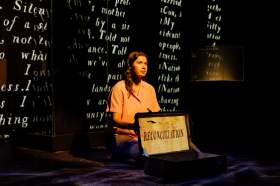The Australian Chamber Orchestra is to be applauded for scheduling Bach’s Christmas Oratorio later this month as their final concert for the year. It was a clever idea to put Bach’s music in listener’s minds now, as the German composer is often neglected at Christmas, apart from a few chorales, in favour of Handel and his stupendous Messiah.
While making comparisons, it’s fair to say that the six Brandenburg concertos are as popular with lovers of Bach as the Vivaldi’s Four Seasons are with, well, a lot of people. As they are not as well known, the Brandenburgs bring a freshness to the concert stage, particularly when complemented by baroque instruments. However, as director Richard Tognetti suggested later in the evening, some types of instrument (such as violins) age more gracefully than others.
The audience could hardly help but notice that older brass instruments, particularly the hunting horns, can be fiendish, at times refusing to cooperate even with such masters as Bostjan Lipovsek and Borut Pahic. Most recordings of the Brandenburg Concertos over the years have not been so daring as the ACO in choosing to use them – but it was a good decision.
The opening item, Brandenburg Concerto No.1, both demonstrated the excitement of these instruments and their occasionally different time signature from that of the core group (an interesting element of the score, not always evident in recordings). Lipovsek and Pahic gave a spirited performance, with their horns most responsive when played loudly or at a fast pace.
The ACO strings played with precision and a beautifully unified sound throughout, needing minimal direction from Tognetti. His attention in the second movement was rightly given to the winds, with visiting oboist Benoit Laurent leading a melodious sound, at times in duet with the violin. This inspired combination brought an unfussed, joyous sound to the third movement, Allegro. In the fourth movement, a series of dances, at last the horns seemed a good “fit”. They even had a Christmassy sound – not necessarily intended by the composer but in the mind of the listener!
The second item was the sixth Brandenburg. It was good to hear the work out of the usual order, particularly given its unique instrumentation: for six strings and harpsichord, with the two violists to the fore. This lent a lovely tone to the second movement, Adagio ma non troppo, in which the bass gave unusual depth to what seemed like a chamber piece.
After interval the full complement of the ACO returned for Brandenburg Concerto No.2, popular for inclusion of a trumpet, with soloist Neil Brough lending a festive and resonant sound to the first and third movements. Recorder-player Genevieve Lacey joined Laurent and Tognetti, with harpsichordist Anthony Romaniuk, in a beautiful contrasting second movement.
Finally, the Brandenburg Concerto No.3 focussed attention on the ACO (or 11 of the musicians) doing what they do best: a focused, bright, polished sound, secure even at a fast tempo. Tognetti and Romaniuk lovingly performed the Adagio before a rhythmic, exciting final Allegro in which even the cellos had a furious workout. Tognetti’s virtuosic playing lent brilliance to a prformance that left the audience shouting for more. The Presto that ends the Fourth Brandenburg was the perfect choice for an encore, and rounded off yet another memorable ACO concert.
Four stars
Brandenburg Concertos
Melbourne Recital Centre
4 December
Reviewer: Suzanne Yanko





